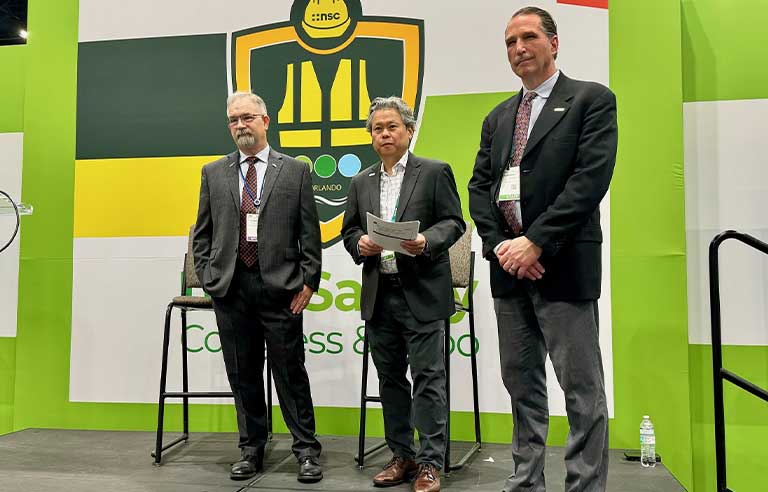Fall Protection remains atop OSHA’s annual ‘Top 10’ list of most frequently cited standards

Orlando, FL — For the 14th consecutive fiscal year, Fall Protection – General Requirements is OSHA’s most frequently cited standard, the agency and Safety+Health announced during the 2024 NSC Safety Congress & Expo.
Scott Ketcham, director of OSHA’s Directorate of Enforcement Programs, presented the preliminary list – which represents OSHA Information System data from Oct. 1, 2023, to Sept. 5 – and S+H Associate Editor Kevin Druley moderated the session from the Learning Lab on the Expo Floor.
“OSHA takes falls very seriously,” Ketcham said during the presentation. “We’re trying to curb this hazard and make inroads to help people understand the standard and requirements.
“Too many lives are lost each year from workers who fall to their death.”
The standards that comprise the Top 10 remained unchanged from FY 2023. However, movement occurred within the ranking. Respiratory Protection, which ranked seventh in FY 2023, climbed three spots to No. 4. Scaffolding, meanwhile, fell four spots to No. 8.
“What’s more precious than our lungs?” Ketcham asked the audience.
The full list:
- Fall Protection – General Requirements (1926.501): 6,307 violations
- Hazard Communication (1910.1200): 2,888
- Ladders (1926.1053): 2,573
- Respiratory Protection (1910.134): 2,470
- Lockout/Tagout (1910.147): 2,443
- Powered Industrial Trucks (1910.178): 2,248
- Fall Protection – Training Requirements (1926.503): 2,050
- Scaffolding (1926.451): 1,873
- Personal Protective and Lifesaving Equipment – Eye and Face Protection (1926.102): 1,814
- Machine Guarding (1910.212): 1,541
“While incredible advancements are made in safety each year, we continue to see many of the same types of violations appear on OSHA’s Top 10 list,” said Lorraine M. Martin, president and CEO of the National Safety Council. “As a safety community, it’s critical we come together to acknowledge these persistent trends and identify solutions to better protect our workforces.”
Finalized data, along with additional details and exclusive content, will be published in the December issue of S+H.

Immediately after Ketcham’s presentation, Mark Chung, executive vice president of safety leadership and advocacy at NSC, and Ken Kolosh, the council’s statistics manager, presented “The Injuries Behind the Fines.”
Kolosh emphasized that the Bureau of Labor Statistics data be presented isn’t a one-to-one relationship, that it’s provided for illustrative purposes – not benchmarking. He went on to say that the “injuries and fatality events are provided as examples that may be associated with the violation.”
Using the Top 10 list, Chung said the BLS data shows that falls accounted for 865 workplace fatalities in 2022. Of those, 700 were the result of a fall to a lower level.

Other reported causes of death in 2022, per BLS:
- Transportation incidents: 2,066
- Workplace violence: 865
- Overdose: 525
- Exposure to electricity: 145
- Forklift, order picker, platform truck – Powered: 73
- Caught in running equipment or machinery during maintenance or cleaning: 54
- Caught in running equipment: 35
“There have been increasing numbers of overdoses,” Chung said. “We need to keep an eye on this and deploy proper countermeasures.”
Post a comment to this article
Safety+Health welcomes comments that promote respectful dialogue. Please stay on topic. Comments that contain personal attacks, profanity or abusive language – or those aggressively promoting products or services – will be removed. We reserve the right to determine which comments violate our comment policy. (Anonymous comments are welcome; merely skip the “name” field in the comment box. An email address is required but will not be included with your comment.)

